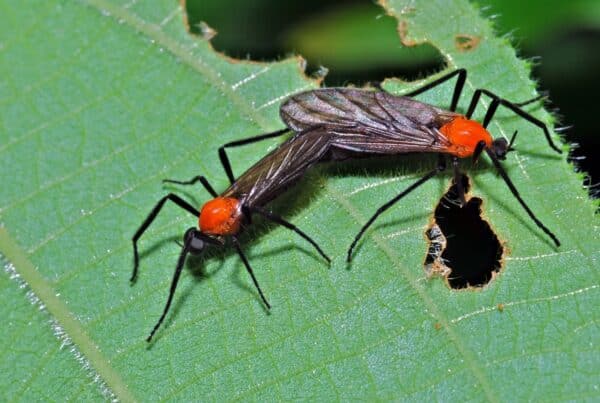Mice may seem harmless, but once they slip into your home, they can cause serious problems. Chewed wires, ruined food, and potential health risks are just a few headaches they bring along. These tiny pests don’t need much to get inside—a gap as small as a dime is an open door to them. When it comes down to the basics, it isn’t too complicated to keep mice out of your home.
Simple preventive steps can make your home a far less appealing place for rodents looking for shelter and food. In this post, we’ll take you through five easy, effective ways to stop mice from moving in and save you the hassle of dealing with an infestation later.
Keeping Mice Out of Your Home
Mice don’t wander inside by accident—they’re searching for the essentials: food, warmth, and shelter. Cooler months often drive them indoors, but food availability can attract them year-round.
Crumbs on the floor, open pantry items, and accessible trash are like invitations for these pests. Even well-kept homes can be vulnerable if small entry points are left unsealed.
Addressing what attracts them is the first step toward keeping mice out.

1. Close Off Common Entry Points
Mice can fit through tiny spaces, making it crucial to block their potential entryways. Walk around your home and check for gaps, cracks, or holes—especially near doors, windows, vents, and where utility lines enter the house.
Pay close attention to areas around pipes under sinks and in laundry rooms. Quick ways to seal openings:
- Fill small holes with steel wool, then cover with caulk to hold it in place
- Use hardware cloth for larger gaps
- Install door sweeps on exterior doors
- Repair damaged window screens and cover vents with fine mesh
Focusing on these small fixes can prevent mice from ever making it inside.
2. Protect Your Food Sources
Accessible food is one of the biggest reasons mice stick around. Keeping your food sealed and out of reach is an easy way to make your home less appealing.
Simple tips to keep food secure:
- Store grains, cereals, and pet food in airtight containers
- Wipe down counters and sweep floors regularly to eliminate crumbs
- Take out the trash frequently, using bins with tight-fitting lids
- Clean out pantry shelves and dispose of expired items
Even pet bowls can attract mice, so avoid leaving food out overnight. These small habits go a long way toward keeping rodents at bay.
3. Reduce Clutter and Hiding Spots
Clutter provides perfect nesting spots for mice, especially in storage areas like basements, attics, and garages. Reducing these hiding places makes your home far less inviting.
Ways to cut down on hiding spots:
- Organize storage areas with sealed plastic bins instead of cardboard boxes
- Keep items off the floor when possible
- Regularly declutter and dispose of unused items
- Store firewood at least 20 feet away from your home’s foundation
Fewer hiding spots make it harder for mice to settle in and breed, preventing small issues from becoming big ones.
4. Make the Outdoors Less Inviting
Your yard plays a bigger role in rodent prevention than you might think. Overgrown landscaping, debris, and easy access to your home’s exterior all encourage mice to move closer—and eventually inside.
Steps to discourage outdoor nesting:
- Trim tree branches and shrubs away from the house
- Clear leaves and debris near the foundation
- Move compost piles and garbage bins away from entry points
- Keep outdoor grills and eating areas clean after use
A tidy yard doesn’t just boost curb appeal—it’s also a strong first line of defense against mice.
5. Use Repellents and Traps Strategically
Natural deterrents and traps can reinforce your prevention efforts. While sealing entry points and cleaning up attractants should come first, adding these methods can help with extra peace of mind.
Common options include:
- Cotton balls soaked in peppermint oil placed near suspected entry points
- Humane traps set along walls or in corners where mice travel
- Electronic repellents designed to deter rodents without chemicals
Place traps and deterrents in areas like pantries, under sinks, and along baseboards—mice tend to stick close to walls when they move.

Other Recommended Maintenance
Preventing mice isn’t just about quick fixes—it’s about keeping up with small maintenance tasks that stop problems before they start. Seasonal home checks can catch new entry points and early signs of rodent activity.
Make it a habit to:
- Inspect your foundation, walls, and roof for new cracks or holes
- Replace worn weather stripping around doors and windows
- Check vents and screens for damage and repair them as needed
- Keep garage doors closed when not in use
- Look for gnaw marks or droppings in less-trafficked areas like attics and crawl spaces
When to Call a Professional
Sometimes, no matter how careful you are, mice still manage to find their way inside. Certain situations call for professional help, especially when:
- You spot droppings or hear scratching sounds in walls or ceilings
- DIY solutions aren’t working, and the problem keeps returning
- There are signs of nests in hard-to-reach places like insulation or ductwork
- You notice chewed wires or structural damage, which can be dangerous and costly
A professional can identify hidden entry points, assess the severity of the infestation, and offer long-term solutions tailored to your home.
Acting sooner rather than later prevents the problem from worsening and causing more damage.
Conclusion
A few small changes can go a long way in keeping mice out of your home. Sealing gaps, securing food, cutting down on clutter, maintaining your yard, and using deterrents all work together to make your home a place mice won’t want to stay.
If mice keep showing up despite your best efforts, it may be time for expert help. Inside Out Pest Services provides targeted solutions to remove mice and keep them from coming back.



